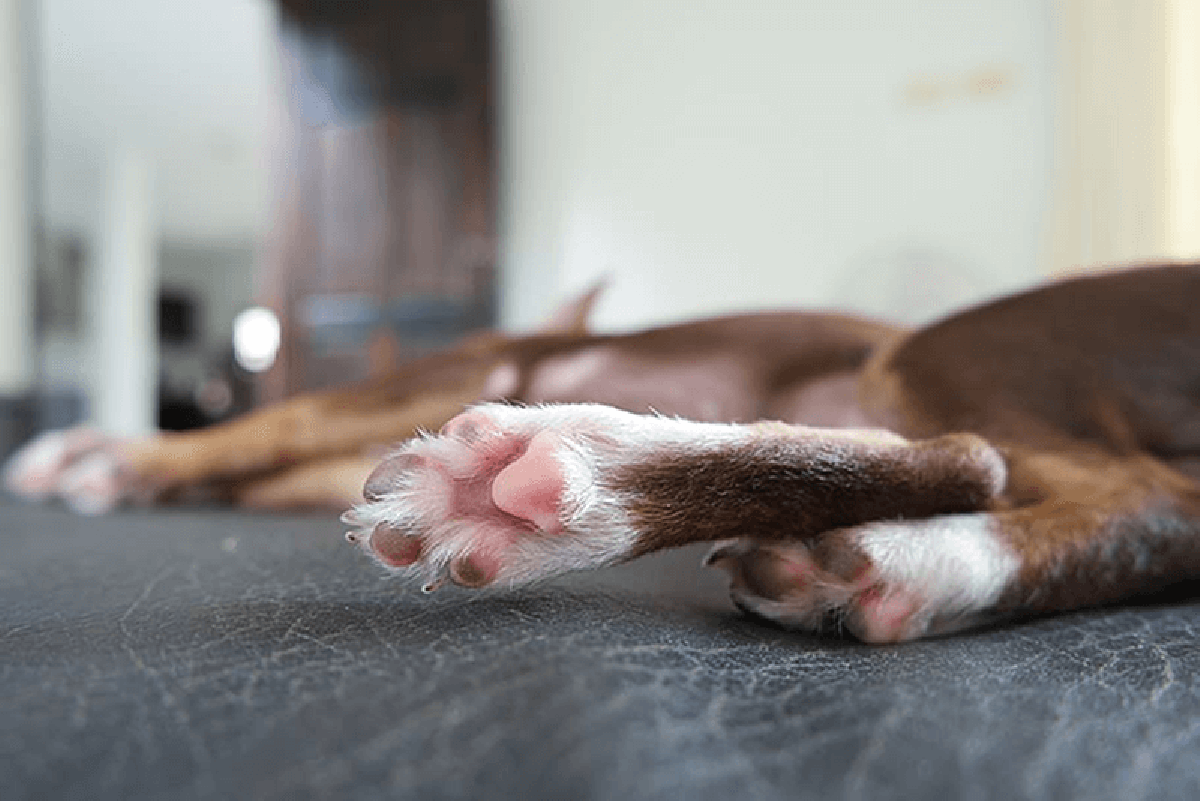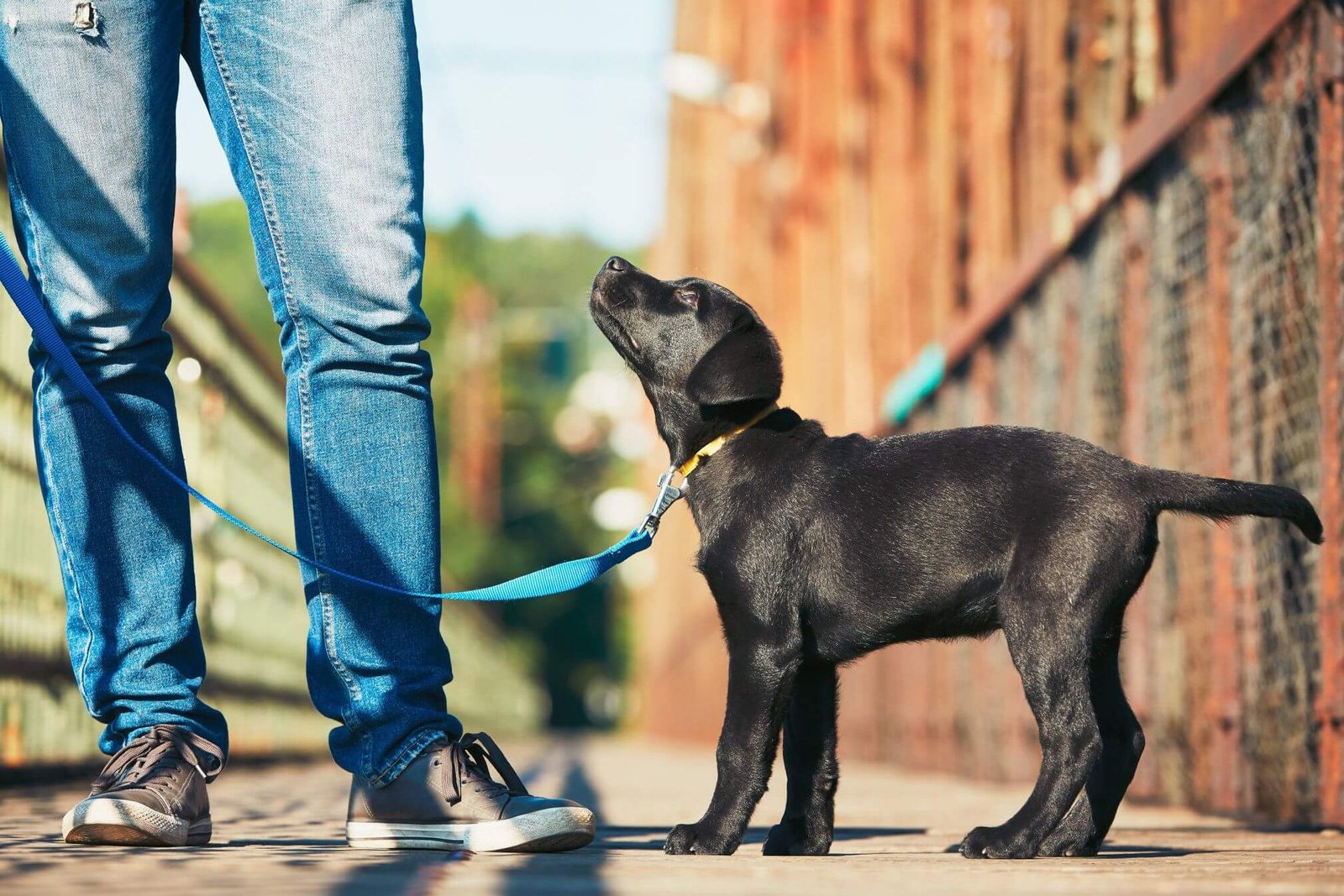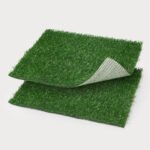Image this: your canine runs outside on the clean grass, gambling fetch, and loving life. When you call her to come back interior, you be aware of a few drops of blood. After a short-term freak-out, you recognize the blood is coming from the pad on her foot. It is not uncommon for dogs and cats to get their claws caught in tree limbs. This may be due to the dog’s desire to chase a squirrel or cat or because that’s where they found a nice snack. Sometimes, the nails on a dog’s paws are too long and poke through the pad. As your furry friend runs, her claws will tear through the soft cushion and cause bleeding.
This is known as pedal hemorrhage syndrome, or PHS for short. PHS can also happen with horses but is less common than with dogs and cats. If your horse accidentally gets his foot stuck, you will see lots of blood pouring from around the hoof and possibly from the sole where the nail is poking through. What to do: If your dog is bleeding from their foot, the wisest option is to immediately run them to the vet. If you cannot do that, apply pressure directly over the wound with a clean cloth or gauze until you can get your pet in for treatment.
You are soothing a sore or broken paw. This is the most common reason that your dog might be limping. If you are trying to help ease a painful or broken foot, this quick guide will show you how.What to do: You can apply cold water, ice packs, ointments, and sprays directly over the painful area to numb the pain and reduce swelling. Pressure with your fingers can also help relieve some of the tension in the affected area by pushing it down into the body of your pet’s paw. If you are worried about infection, though, it may be better to go to the vet and get a shot numb the pain that your doctor can give—sore or broken teeth. It would help if you tried brushing your dog’s teeth after each meal so they don’t suffer from tooth decay or gum disease, which can lead to painful oral problems like those listed above. What to do: It is a good idea to carry some dog toothpaste in an emergency, but you should never force your pet into using it if they are uncomfortable with it.

What to do: You can apply cold water, ice packs, ointments, and sprays directly over the painful area to numb the pain and reduce swelling. Pressure with your fingers can also help relieve some of the tension in the affected area by pushing it down into the body of your pet’s paw. If you are worried about infection, though, it may be better to go to the vet and get a shot numb the pain that your doctor can give—sore or broken teeth. It would help if you tried brushing your dog’s teeth after each meal so they don’t suffer from tooth decay or gum disease, which can lead to painful oral problems like those listed above. What to do: It is a good idea to carry some dog toothpaste in an emergency, but you should never force your pet into using it if they are uncomfortable with it. Instead, try giving them cold water on a plate while they’re eating to help them clean their teeth naturally.
Carrying some dog toothpaste in an emergency is a good idea, but you should never force your pet into using it if they are uncomfortable with it. Instead, try giving them cold water on a plate while they’re eating to help them clean their teeth naturally. If you notice your dog has problems with oral health, you should take them immediately for veterinary attention so that they can be treated and ensure that the problem doesn’t get worse.
Nothing like reducing the pad on their paw that can damper a dog’s spirit. They use their toes to explore the world, which will be hard on them, mainly for an energetic canine. Even though this may be scary and inconvenient, a cut pad is typically best for minor damage, and you could regularly contend with it yourself. This guide will assist in walking you through what to do and recommend how to save this from taking place for your dog in the future. Scrubbing the area with soap and water is advisable to cleanse it.
If you do not have any, use a toothbrush. It is best to soak the paw in chilly water for 15-20 minutes as soon as you clean it so that the pores and skin will likely be extra flexible. Be cautious about utilizing hydrogen peroxide on your dog’s pads since you can hurt them if used in extreme measures. Hydrogen peroxide breaks down into oxygen when exposed to air, which might cause excessive damage or an escape of deadly gas. Towels are unsuitable for your dog’s paw pads unless soaked first. Frightening towels can cause harm if used too typically, whereas a damp and cool towel might be much more gentle. The key to reducing the danger of the towels is soaking them in chilly water earlier than utilizing them on your dog’s paws.
Call Your Veterinarian
You may often be able to take care of your canine’s pad at home, and your vet can advocate for you on what to do. If the bleeding is severe, the reduction is profound, or the pad is wholly reduced, your vet will likely advocate for you to convey your canine into the office. Dogs do not constantly display that they’re in ache, so you cannot rely on their performance to recognize the excessive cut. Get a fantastic look at the wound earlier than identifying whether or not you could take care of it on your own or now not. How To Care For A Wet Dog.
If your canine is bleeding heavily, you may need to visit your vet as soon as possible. The most effective method to care for these dry wounds would be to use a clean and damp cloth or gauze pad. It’s necessary to refrain from soaking the pad in water first because this could trigger blood coagulation. To take care of these moist wounds, you could use an antibiotic ointment such as Neosporin every hour or so if they’re not too sore. If the wound bleeds after 2-3 hours, use a clean cloth dampened with warm water. Ensure you are taking your dog to the vet if they are bleeding heavily, and they may want to administer specific medication such as antibiotics.
Understand that protection continually comes first for both you and your puppy. When you have a large canine and/otherwise you don’t experience assured taking care of the wound yourself (even supposing it’s far minor), head on to the vet. in case you do cope with the damage yourself and your canine is in a variety of pain, keep in mind using a muzzle. Gives you a lot more control. Please don’t leave your dog with individual companions or at daycare before they’re fully knowledgeable and ready to accept the puppy.
While it might be simpler for them, they might not have the ability to take care of themselves and there is a possibility that if the pup gets overzealous or begins to affiliate, somebody else could get hurt. Joints and muscles and the canine’s cardiovascular system must be exercised, which should be pushed with prolonged exercise. If your dog is energetic and likes to conduct, investigate taking up a group or individual sporting activity that could get the two of you involved. Chew toys are also an excellent way to keep your canine busy, or if they’re an aggressive chewer, prevent them from tearing their toys apart. There are a lot of different shapes and textures to choose from too.
If your vet suggests that you deal with the reduction at domestic, the following are a few steps to take to assist in its healing. You may want to attend to the wound on a few potty pads so your canine doesn’t sing blood around your home. If you have a topical ointment that your vet could suggest, use it on the wound after it has dried. Avoid scrubbing the wound or squeezing it because this may increase bleeding. Don’t brush your animal’s teeth or cleans the teeth if it has a tooth that is cracked. This will make it worse and increase bleeding. If the canine has bleeding gums, you should not allow it to chew on its teeth or anything. Else, to stop the bleeding.
If your vet suggests that you deal with the decrease at domestic, the following are a few steps to take to help it heal. You’ll want to attend to the wound on a few potty pads so your canine doesn’t sing blood around your home. If you have a topical ointment that your vet could suggest, use it on the injury after it has dried. Avoid scrubbing or squeezing because this may increase bleeding. Don’t brush your pet’s teeth or cleans the teeth. If it has a tooth that is cracked or breaking, it might need to be extracted. Avoid brushing and wiping teeth that might have loose pieces of tooth.
Clean the Wound
First, flush the wound with water or a saline answer. Then, use an antiseptic to disinfect the wound. This step can also assist you in spotting the damage and certainly deciding how severe it is. Hydrogen peroxide is a type of antiseptic that can help with this. You can also use rubbing alcohol such as Bacardi 151, vodka, and other rubbing alcohols. If you do not have hydrogen peroxide or rubbing alcohol, use a sterile saline solution instead. After you have flushed and disinfected the wound, you can cover it with a bandage. If you have any severe injuries to your head or face, it is essential to protect those wounds with a poly-fabric bandage rather than cotton gauze.
Cotton gauzes come into contact with your skin, which could do more damage than good if not appropriately secured. Remember, it is always important to disinfect your wound after cleaning it. If you do not, then you risk the chance of introducing bacteria into the wound. This may lead to infection and further complications for you. You must talk to your healthcare provider about getting stitches if the damage is severe. Getting them done as soon as possible is always best because the longer you wait, the harder it will be on you. Remember that stitches are not painful and should help speed up the healing process for your wound.
Wrap The Wound

You can use gauze and then wound wrapping. You could also use athletic tape, but don’t get the video to your puppy’s fur because it hurts while it comes off! Ensure you change the dressing and inspect the restoration procedure frequently. Don’t wrap the wound so tightly that you reduce movement. It’s difficult to see the damage in the blood vessels or so loose. If you cannot use gauze, you could use a thin layer of cotton. If your puppy must be left at home and there will not be a vet that can come out, you may even consider using a paper towel or toilet paper roll as a substitute until they can get in touch with their veterinarian. Don’t apply too much pressure when wrapping up injuries.
Warmth and coldness should help reduce swelling and speed up healing time. Proper temperature helps with the healing process. If you use a heating pad, do not apply it to an open wound, as it can increase the risk of infection. When you’re up to date on all your vaccinations, your pet can get a flu vaccine from their vet nine times yearly. The initial vaccines are usually protective for about one year and make them able to fight off any flu that is floating around at that time.
This will give them a fighting chance against any severe illness that comes their way and makes it easier for them if they start feeling sick if they don’t have to get the vaccine again. A flu shot can be given in a variety of ways. Your vet usually gives it as a “course” over time or through an injection, lasting for three weeks. This will give them immunity for one year and make it easier if they become sick when the vaccine has run out, but it does not protect against future flu strains.
Cover The Wound
Depending on how interested your canine is in licking and getting on the wound, there are exclusive alternatives you could select. If your dog leaves the damage by myself, you could be able to keep it wrapped with athletic tape or wound dressing. You may also cowl the sauce with a sock to feature an additional layer of protection. If your dog is concerned by the reduction and seeks to bite and lick it, you could need to use a cone until the cut heals. You could be able to hold a mild piece of clothing over the injury if you don’t need to cowl it.
Irrespective of how you pick to preserve your dog from entering the reduce, be sure to maintain the vicinity effortlessly. If it’s incredibly muddy outdoors, having indoor dog potty grass may be beneficial in keeping the wound smoothly. An excellent solution might be to have a Loobani in your canine. This way, you should not hazard them stepping on dangerous doors while their paw remains healing. Some other helpful actions to undertake in a medical emergency are to spot your dog sitting and utilizing an ice cube or cold water. This will undoubtedly decrease the inflammation and bring them less discomfort. It would help if you kept the injury clean and dry and banned any stinging insects that might have gotten inside their mouth while they were injured. These points will help stop additional discomfort while addressing the injury.
Stopping it From Happening Again
If you’ve been thru this already, you recognize that it’s no fun for you or your dog. The subsequent are some hints to save you a destiny canine pad harm:
If your dog has a cut that is still healing, limit challenging play that would motivate it to break up returned open
Look at the canine’s play and strolling location for sharp pieces (sticks, glass, plastic, rocks, walnut shells, and many others.)
- Any time it’s no longer secure for your dog to go out of doors, use an indoor dog toilet.
- Use dog booties while walking on the street or sidewalk
- Avoid taking walks on salted roads within the iciness (wash your canine’s feet while you return in case you do)
- Make sure pavement is cool to the touch during the summer season
- Wash and look at your canine’s pads regularly
Any time you spot blood, your alarm bells begin to go off. However, if you take care of a canine’s pad harm successfully, this can be a minor injury and temporary inconvenience for you and your canine companion. The next time you’re out and about and spot blood, evaluating the injury’s causes is essential to decide how to proceed. It’s also vital to assess what damage your furry friend is coping with, as that will provide insight into the amount of blood and where it has come from. We’ll now look at some general guidelines for evaluating canine injuries. If you’re concerned about your pet’s health, consult a veterinarian first.



